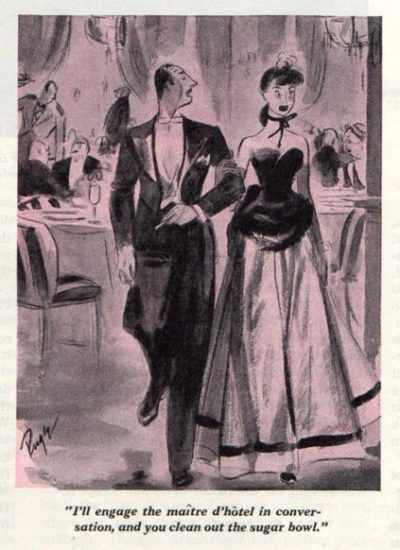Could You Stomach America’s Wartime Sugar Ration? 75 Years Ago
 Life in America lost some of its sweetness in May of 1942. Not only was the country facing war with powerful enemies, but Americans had to cut their sugar consumption in half.
Life in America lost some of its sweetness in May of 1942. Not only was the country facing war with powerful enemies, but Americans had to cut their sugar consumption in half.
The U.S. no longer had access to the countries that had provided most of our sugar. Much of the remaining supply of sweetener was requisitioned by the War Department to ensure that America’s military personnel were well supplied. The U.S. Army, for example, provided its soldiers with more than twice the amount of sugar they had consumed as civilians. And still G.I.s craved more. A Navy study reported that when servicemen bought food to supplement their rations, 40% of their purchases were for candy.

Normally, shortages drive up retail prices until only the well-off can afford the in-demand item. To ensure Americans’ sacrifice was evenly distributed, the Office of Price Administration limited all consumer purchases of sugar.

Before rationing, Americans consumed on average about one pound of sugar every week. When homemakers were asked, pre-rationing, what was the least amount of sugar they would need to get by, their answers averaged to around 0.6 pounds a week. As it turned out, this was still more than what would become their wartime ration of a half-pound.
On April 27, 1942, all sales of sugar were halted. Grocers began selling sugar again on May 5, but only to customers who presented their new war-ration books. Provided the grocer even had sugar to sell, he would tear out the coupon valid for the current two-week period. The shopper would pay about 8¢ and receive one pound of sugar, his or her allotment for that 14-day period.
Every American — adults as well as children — received a ration book, so parents didn’t have to take from their rations to feed their children.
Not only did Americans learn to get by on less sugar, they endured the shortage for five years, including 22 months after the war ended.

Could Americans today cut their sugar intake in half? And just what is their annual consumption? It’s not easy to determine. Many of the sugars we consume occur naturally in our foods. So researchers tend to focus on added sweeteners refined from sugar cane, beets, and corn.
But even the added sweetener numbers vary. Estimates of annual consumption range from 70 pounds to 150 pounds a year.
Even going by more conservative numbers means Americans eat, on average, 22 teaspoons of added sugar every day. About 20% of Americans eat 48 teaspoons, or one cup, of sugar every day.
Promoting the benefits of better health has done little to reverse the consumption rate. According to Stephan Guyenet, even with our awareness of sugar’s contribution to obesity, heart disease, and diabetes, our sugar diet is headed in only one direction.
Featured image: U.S. National Archives